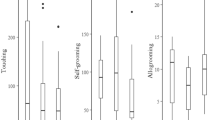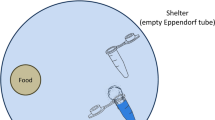Abstract
Potts and Vanderplank1 deduce a relation between the size of the pulvilli and the speed of action of contact insecticides. This would follow, as, to kill an insect, a lethal dose of the insecticide is required to be transferred to it. The larger the pulvilli, the larger the dose of insecticide the insect will collect when it alights on a treated surface. The speed of action of various modern synthetic insecticides, however, shows wide variation.
This is a preview of subscription content, access via your institution
Access options
Subscribe to this journal
Receive 51 print issues and online access
$199.00 per year
only $3.90 per issue
Buy this article
- Purchase on Springer Link
- Instant access to full article PDF
Prices may be subject to local taxes which are calculated during checkout
Similar content being viewed by others
References
Nature, 156, 112 (1945).
Author information
Authors and Affiliations
Rights and permissions
About this article
Cite this article
HICKIN, N. Mode of Entry of Contact Insecticides. Nature 156, 753–754 (1945). https://doi.org/10.1038/156753b0
Issue Date:
DOI: https://doi.org/10.1038/156753b0
This article is cited by
-
Kontaktgifte
Naunyn-Schmiedebergs Archiv f�r Experimentelle Pathologie und Pharmakologie (1949)
Comments
By submitting a comment you agree to abide by our Terms and Community Guidelines. If you find something abusive or that does not comply with our terms or guidelines please flag it as inappropriate.



